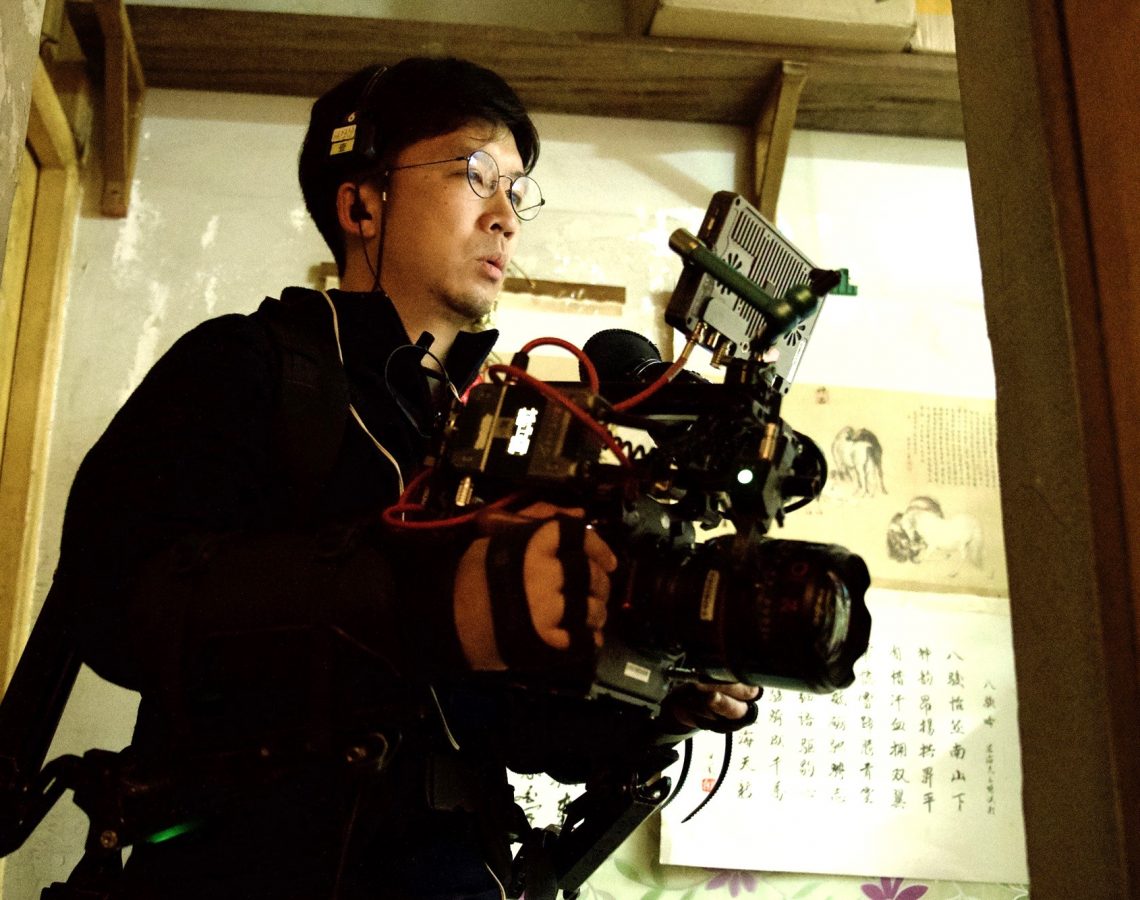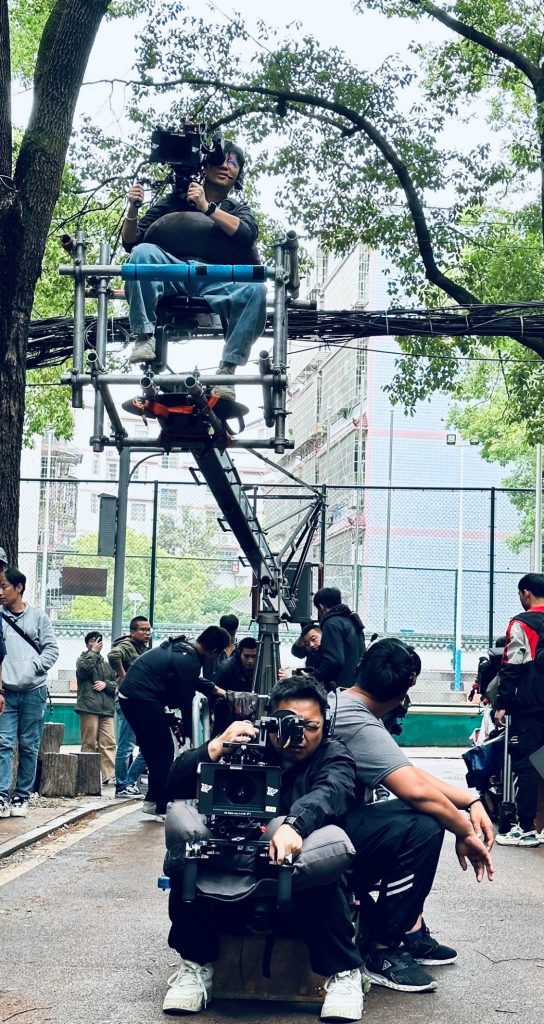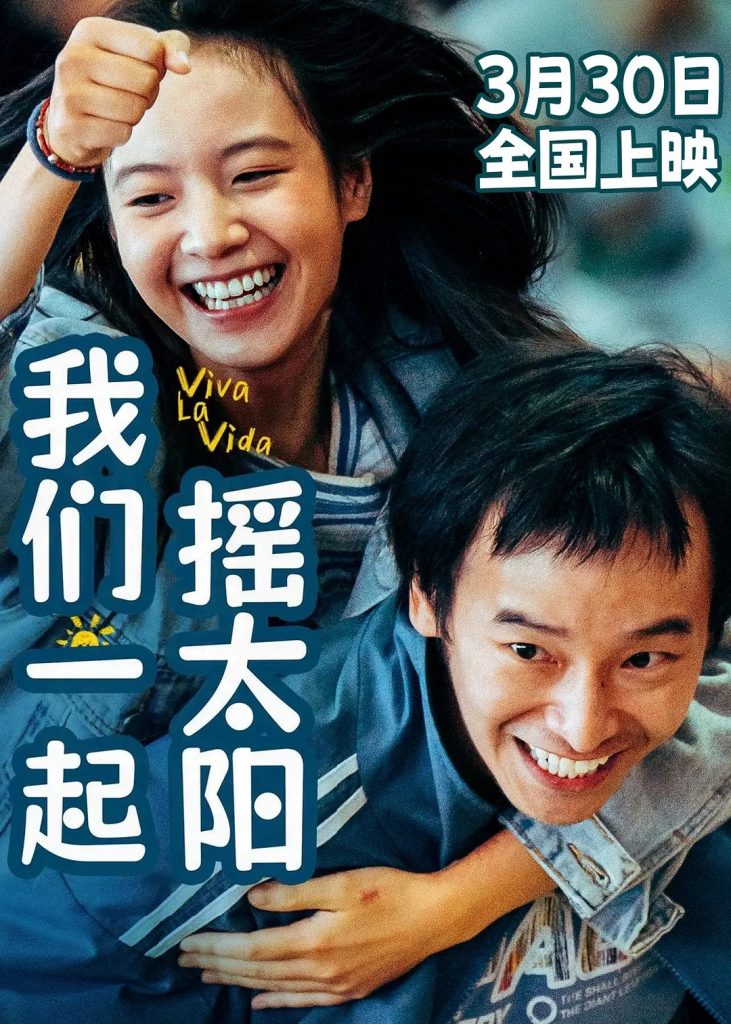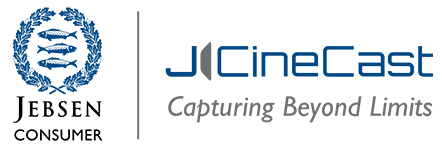Angénieux Optimo Primes: Interview with Viva La Vida DP Zhang Jiang

Directed by Han Yan and starring Peng Yuchang and Teresa Li, the warm realist romantic film Viva La Vida has enjoyed widespread popularity and acclaim since its release, hailed as “healing and extremely well-suited for Spring.” The film conveys both despair and warmth, with its core message being that through love and courage, one can activate the sun within our own hearts and overcome the turbulence of life. To authentically depict the realities of severely ill patients, Director of Photography Zhang Jiang conducted tests with various lenses before selecting the Angénieux Optimo Prime series.
Viva La Vida is the concluding chapter of Director Han Yan’s “Trilogy of Life” film series. What were the Director’s requirements regarding the visual grammar?
In Viva La Vida, Director Han continued his trademark realistic style while elevating the sense of authenticity visually. While location scouting in Changsha, Director Han emphasized the importance of accurately capturing everyday Chinese urban environments and residents’ lives as filmed, keeping things natural with selective modifications or even shooting scenes unaltered. We decided to draw inspiration from the Dogme 95 movement’s techniques, such as handheld camerawork and close connection with actors. Where possible, we replaced traditional film equipment with everyday lighting for a more natural look. We also strove to limit staging and restriction for the actors, allowing them to genuinely live in the scene. The ultimate goal was to place viewers physically next to the actors.

After establishing the visual tone, how did you execute the shooting?
The most interesting aspect in making this film was determining the visual grammar. Director Han asked me to accompany the production crew and art director as one of the first groups to arrive in Changsha for location scouting. Following the team and participating in early scouting around Changsha proved very helpful for the actual shooting. I was able to collect local visual materials like local weather, daytime and night lighting, and how residents walk, talk, live, or light and arrange their homes. This allowed me to bring the authentic atmosphere of Changsha to the film.
After selecting some main scenes, before set dressing, the gaffer and I tested locally bought household lamps on location, carrying cameras and different lenses to shoot indoor and outdoor footage, and compared these with film stage lighting. We preferred the quality of household lamps, and Director Han was also most satisfied with the combination of these household lamps and the Angénieux Optimo Primes.
The relationship between the camera and the actors was also important. The main scenes were shot in the two old houses rented by the female lead, with substantial exchanges between the male and female leads. I observed them closely both in or out of scenes, as did the cameraman and focus puller – they learned to anticipate the actors’ physical habits and nuances, allowing fluid camerawork during takes. The goal was to genuinely capture the actors’ most subtle emotions.
What focal lengths were most frequently used during shooting? Were any other lenses used as supplements?
We mainly used the Angénieux Optimo Primes from 28 to 60mm. Daytime scenes were typically shot between T2.8 to 4, and the night scenes at T2.0. Some zoom effect shots incorporated the Angénieux Type EZ series 22-60mm and 45-135mm lenses chosen for their lightweight for shoulder shooting.
Some scenes featured actors in public areas among pedestrians. These were discreetly shot using the Angénieux 2X 36-435mm lens. We also shot the sunrise with this lens, with a 2x extender added. It’s a zoom lens I really like, with clear and solid imaging performance.
How were the lighting and light sources handled during the shooting process?
Our approach for this film was unique in that it was more retreated and focused on achieving an extreme level of realism to keep the viewers’ focus on the characters. We sourced lights from daily life as much as possible; whether interior, exterior, day or night, we aimed to retain or appropriately amplify the imperfect colour spectrums and effects of these non-professional light sources to pursue the most authentic and natural effect. We also paid attention to logically placing light sources that would realistically exist within each scene, without intentional processing. For example, in the scene where the male lead carries the female lead on his bicycle to the hospital, the gaffer Wang Chunzhi procured authentic streetlamps to achieve environmental illumination. We installed searchlights in the parking lot and used an old KINO large lighting case to simulate the surrounding urban glow. We are very familiar with old lighting cases, but still did some tests – its illumination effects were closer to the kind of lighting qualities I’ve seen in the street-list atmospheres in Chinese cities.
Which scene during filming did you find most challenging? How did you address it at the time?
The most difficult scene was the walkie-talkie dialogue between the male and female leads. The female lead was sitting indoor chatting with the male lead, who was on the rooftop – they were in two completely different environments, yet their dialogue was interwoven with strong emotional connection, marking an important turning point in their relationship.
The rooftop he was on at the time was located in an old, relatively central residential community in Changsha. We couldn’t shoot past 11pm. After 11pm, the surrounding buildings would switch off their lights, removing our lighting reference. We also did not want to disturb the residents below. Therefore, our entire filming window was limited to just 4 hours. This time constraint dictated how we would have to light the rooftop surrounded by high-rises in this old residential community without lengthy setups yet ensuring efficient shooting.

From the outset, I decide against using the concept of moonlight. I preferred to light the scene with the surrounding urban lights. We adopted the traditional method of using lighting bars. To maintain authenticity, I incorporated old-style fluorescent tubes arranged in a matrix pattern. After numerous location visits and tests conducted together with the gaffer Wang Chunzhi we ultimately supplemented with some LED lights as a backup measure.
I must commend the low-light shooting abilities of the Angénieux Optimo Prime lenses at T1.8. Combined with the traditional lighting bars, it helped me obtain the proper exposure, and we were satisfied with the effects.
What was your overall impression of the Angénieux Optimo Prime series lenses?
The first impression of this series is its relatively small size and light weight, making them ideal for our shooting. Then we brought four sets of the lenses and did comparative lens test under different lighting and environmental conditions. The retention of highlights and shadows delivered by the Optimo Primes were the most solid, especially under the bright highlights without overexposure.
Perhaps owing to French aesthetic influences, images were solid and natural without excessive sharpness. Smooth focus transitions, even when fully open, preserving dimensionality. The characters blended naturally with the background. Similarly for colors – the transitions between different hues were rendered rather softly, resembling blended oil paint shades for a cohesive and harmonious look. What I liked most about the primes was the rainbow-like flares. The level of flare was well controlled, making the images lively without becoming dull or causing excessive image pollution.

Some DPs say that handheld shooting can better capture the actors’ emotions. What was your approach to this film?
Over 90% of the shots in this film were handheld. The decision to use this technique was thoroughly discussed with the Director. On a creative level, we wanted the camera to be closer to the characters, to enhance their sense of presence. On the other hand, it was to maximise capturing the actors’ performance. A handheld camera can flexibly change angles and move to keep up with the actors’ movements.
Angénieux Optimo Primes launched a unique IOP (Integrated Optical Palette) design. Did you try using it this time?
During the lens test this time, I tried changing different rear filters. I think this lens has a strong customisation ability, which allows DPs to choose different combinations and easily replace filters by themselves with just some simple research. This makes it very convenient and reduces the difficulty and cost for DPs to customise lens characteristics. But for this film, since the visual requirements called for simplicity, I did not use the IOP function. I hope to experience it in future shoots.
Photo credit: Zhang Jiang



